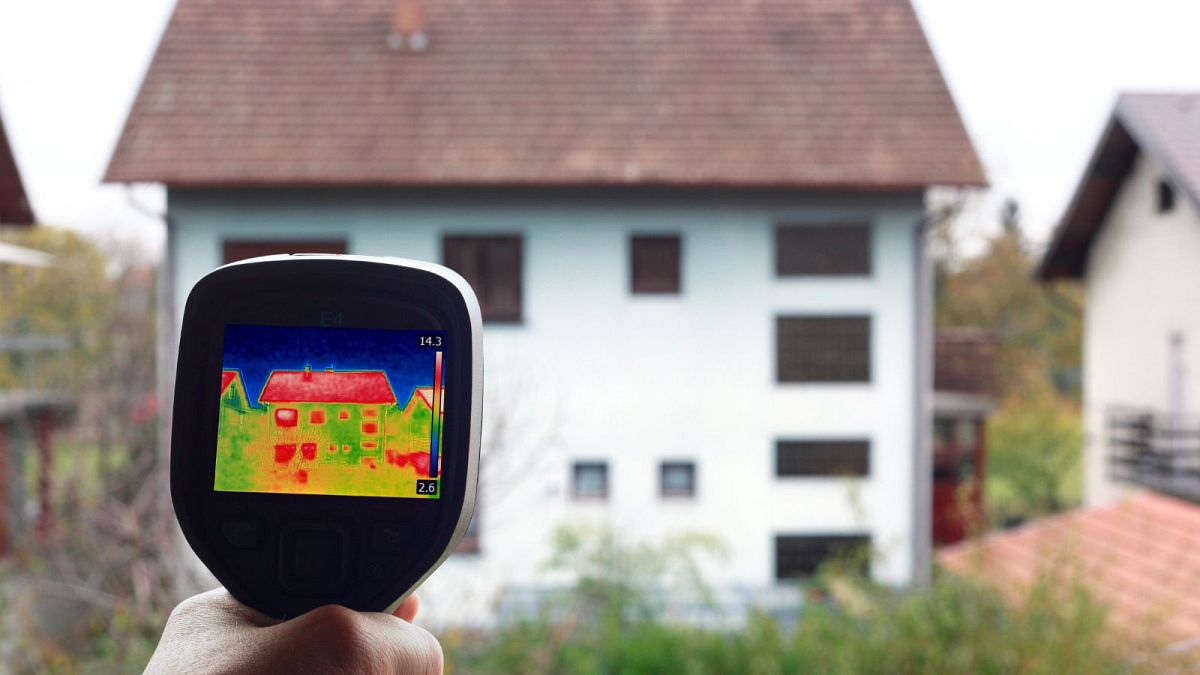European land temperatures have increased more than the global average, with big consequences for our energy use at home.
Climate change is increasingly visible in Europe in big ways and small; from devastating wildfires in Spain this summer, to December snowdrops in the UK.
It’s important to join the dots of this crisis, and one of the key ways we can do so is by tracking global warming.
Between 2012 and 2021, global average near-surface temperatures were 1.11 to 1.14 °C warmer than pre-industrial times. That decade is now the warmest one on record.
Global warming is especially rapid in Europe. European land temperatures increased by 1.94 to 1.99 °C in this period, according to the European Environment Agency.
How is global warming affecting our lives? As a simple example, we now need less heating and more cooling. The need to heat buildings has decreased over the last decades, while the need to cool them with air conditioning has increased.
What are heating/cooling degree days?
The findings described here are based on heating degree days (HDD) and cooling degree days (CDD) - but what are they? According to Eurostat, HDD and CDD are weather-based technical indexes describing the energy requirements of buildings in terms of heating and cooling.
These indexes reflect the severity of the cold or heat in a specific time period, taking into account both the outdoor temperature and average room temperature. Essentially, based on the mathematical calculations, they reveal the need for heating or cooling buildings. (Not the number of days you need to turn the heating on for).
Here’s how Europe’s need for heating has changed over the last four decades.
Which countries have seen the biggest decline in heating needs?
In the EU, HDD declined by 11 per cent between 1979 and 2021, from 3,510 HDD in 1979 to 3,126 HDD in 2021. In other words, only 89 per cent of the heating needed in 1979 was needed in 2021.
Portugal had the highest decrease of 1979-2021, at 28 per cent, followed by Malta (22 per cent) and the Netherlands and Ireland (both 21 per cent). Hungary and Slovakia had the lowest rates of change as the HDD value fell by only 3 per cent for both countries.
The need for heating also decreased by 6 per cent in Finland, 10 per cent in Norway, and 11 per cent in Sweden. These Nordic countries were the top three in terms of average HDD between 1979 and 2021.
In Germany, only 87 per cent of the heating needs of 1979 were required in 2021. In France, this value was 88 per cent.
Need for cooling increases nearly threefold
Changes in CDD are more evident than changes in HDD. The average CDD value in 2021 was almost three times higher than that of 1979. The increase from 37 CDD to 100 CDD over the last 42 years means that cooling needs have shot up by 170 per cent.
In 1979, CCD values were almost zero in many EU countries. For this reason, instead of looking at percentage changes, it’s more meaningful to compare values between 1979 and 2021. Several countries that needed almost no cooling 40 years ago require it now.
Can you imagine people in Latvia, where the average annual air temperature is 5.9 °C, needing to cool their buildings? Scientific findings suggest they do. The CDD of Latvia was only 0.23 in 1979, but it rose to 42 in 2021. This is still a very low value compared to some other countries, particularly Mediterranean ones. However, it is higher than the CDD of France, where thousands of people died in heatwaves in 2022.
Between 1979 and 2021, CDD values increased from 0 to 38 in Estonia, from 0.2 to 49 in Lithuania, from 1 to 25 in Austria, from 0 to 8 in Finland, and from 2 to 12 in Germany.
Mediterranean countries were hit hardest by these increases, such as Greece (from 169 to 421 CDD), Spain (from CDD to 239 CDD), and Italy (from 76 to 289 CDD).
Energy crisis: Which countries need more heating?
HDD values tell us how much heating is needed in each country. This varies significantly across Europe. Not surprisingly, Scandinavian countries have the highest HDD values, meaning that they need the most heating.
Between 1979 and 2021, Finland had the highest average annual HDD value (5,665), closely followed by Norway (5,610) and Sweden (5,325). Denmark (3,389) ranked 10th. Malta had the lowest value at 534 HDD.
These highest and lowest values mean that the need for heating any particular building was ten times higher in Finland than in Malta in the last 42 years.
How much has climate change cost the EU?
The impacts of climate change have become increasingly more evident with extreme weather such as heat waves, floods, and storms. These changes are causing losses around the world. In the EU alone, climate change-related extremes caused over €145 billion in economic losses in the past decade. Data suggests a trend of increasing losses in Europe.
In 2020, the total climate change-related economic losses across 21 EU countries were €12 billion according to Eurostat.
Between 1980 and 2020, climate-related extremes led to economic losses totalling an estimated €487 billion in the 27 EU Member States. The annual average of the last 40 years is €11.9 billion.
In 2020, France (€4.2 billion), Italy (€2.5 billion), and Germany (€1.7 billion) experienced the largest economic losses as a result of climate-related events.
Change in the GHG emissions in the last 30 years
To mitigate climate change and global warming, global actors in general and the EU, in particular, are making commitments to cut GHG emissions in an effort to halt the rising temperatures.
GHG emissions per capita in the EU have gradually declined over the last three decades from 11.2 tonnes in 1990 to 7 tonnes in 2020 - 38 per cent during this period.
The bar race chart above shows how GHG emissions per capita have changed for EU members, the United Kingdom, Norway, Switzerland, Turkey and Iceland over the last three decades.
Except for Latvia, all EU members have significantly reduced their emissions of GHG in the last 30 years.
Sweden is the country performing best in terms of cutting GHG emissions per capita. This Nordic country decreased its emissions by 83 per cent between 1990 and 2020, followed by Estonia (59 per cent) and Romania (58 per cent).
In Turkey, an EU candidate country, emissions per capita rocketed by 97 per cent. However, Turkey (5.7 tonnes) still had lower GHG emissions per capita in 2020 than the EU average.



